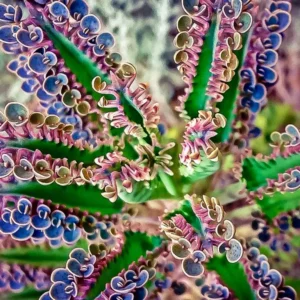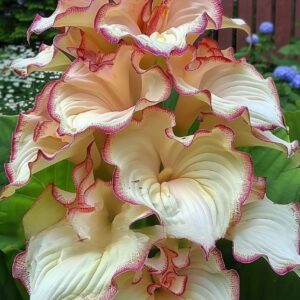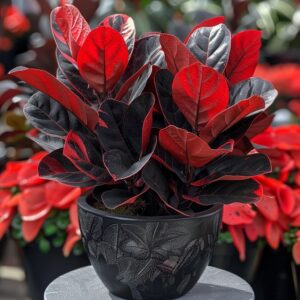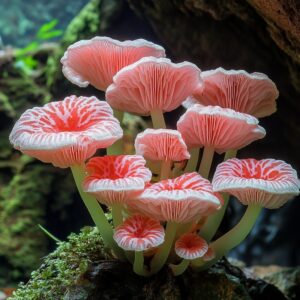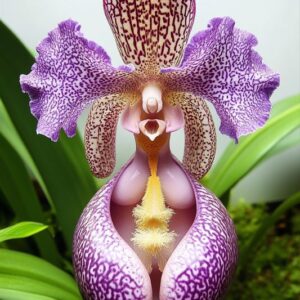

As much as I enjoy growing classic houseplants and sometimes buying trendy ones (such as this pickle plant), there’s something very satisfying about getting a plant that’s not super popular.
But I’m a generous plant keeper – I love sharing advice as much as I love sharing baby plants. So I’ll tell you about this one plant because chances are you haven’t been seeing it featured on every single houseplant website ever.
It’s a South American native called kohleria (Kohleria amabilis) with colorful tubular flowers that open up with the elegant flare of a flamenco frock.
Here are six reasons why I think you should give this houseplant a try:
Let’s start with the best part: not only is kohleria a long bloomer, it is a repeat bloomer. Talk about hitting the houseplant jackpot!
For me, kohleria blooms about three times a year – in all seasons except winter (that’s when I let it go dormant).

Does that remind you of any other houseplant? Now what if I told you that kohleria belongs to the Gesneriaceae, also known as the Gesneriad family?
Does that ring a bell?
A famous member of the gesneriad family is the African violet, a blooming houseplant with a large fandom of collectors. So if you happen to be an African violet aficionado, you already know how to keep a kohleria happy and blooming.
You’d think that such a rare tropical beauty is high-maintenance, right? Not at all. Kohleria is quite an easy-going houseplant. It does well at an average room temperature of 64-72F (approximately 18-23C). It also likes bright light, as long as it’s not direct light.

During the winter months, I allow my kohleria to enter dormancy by moving it to a darker, cooler spot and reducing (but not completely stopping) watering. I prefer to do this just because the days are short and cloudy in the winter anyway. But if you still get enough daylight in the winter where you are, your kohleria will keep blooming.
In terms of humidity, anything about fifty percent will keep your kohleria happy and healthy. Don’t place it close to sources of heat or air conditioning, and definitely don’t mist it with water.
Kohleria won’t pull a fittonia on you and faint when it’s thirsty. Because when it comes to watering, there are two clues that tell us kohleria can handle some periods of drought:
- it has rhizomes underground – they’re better at storing water than other root structures;
- Every part of the plant (from leaves to stem to flowers) is covered in tiny hairs – this slows down the loss of water that usually occurs through transpiration.

Just to avoid any drama, I water my kohleria from the bottom. I pour water into the saucer and allow the plant to absorb as much as it needs for about an hour or two. Then I drain the excess water, if there’s any left. I prefer this method of watering because I want to protect the rhizomes from being constantly damp.
Kohleria rhizomes grow very close to the surface; so when we’re pouring water from above, we run the risk of keeping the rhizomes constantly wet. By watering from below, we eliminate this risk.
Kohleria grows from rhizomes that look like very hairy burgundy (or white) caterpillars. Rhizomes travel underground horizontally and then send new shoots back to the surface. So even when you start with one plant per pot, you’ll likely see a couple more pop up right next to it. I just scratched the potting soil off the top and found one to show you.

That’s even more good news because if you can’t find kohleria for sale at a local plant nursery, you can order a set of rhizomes and start a few plants yourself.
But we’re plant people here, so we take matters into our own hands. We don’t have to wait for self-propagation. I’ve also successfully propagated kohleria by rooting cuttings in water. In fact, I have one in my propagation corner as I’m writing this article.
It takes about a month to six weeks for the plant to be ready for transfer to a potting medium. But I like to keep mine in water a bit longer until it gets a strong root system.

I’ve also seen some online vendors sell kohleria seeds too. So far, I haven’t had any luck starting tropical plants from seed. Or maybe I just lack that skill when it comes to tropicals. So as far as I’m concerned, buying rhizomes over seeds is a safer bet.
Do you know what’s amazing about a plant that grows from rhizomes? Even when it looks dead above the surface, the rhizomes tucked underground might still be viable.

So if you’ve neglected your kohleria for a bit too long, and it just looks like a mass of dead foliage, don’t throw it away. Start watering the soil again – very little in the beginning – and you might just see new shoots popping up from the rhizomes.
Kohleria is a prolific grower with a tendency to stretch toward the light. I have to stake my kohleria in the winter to keep it upright. But once spring comes around, and I know the plant will resume growing, I cut it back just above a lower leaf node. This will encourage the plant to grow side shoots and give it a bushier appearance.

If you’re reshaping the plant by taking basal cuttings, consider placing them in water to root—yes, even your pruning can serve a dual purpose!
We’d love to hear from our readers who are already growing this beautiful houseplant. Feel free to share your kohleria success stories and photos on our Facebook page!

Including Sunday ramblings from our editor, Tracey, as well as “What’s Up Wednesday” our roundup of what’s in season and new article updates and alerts.
